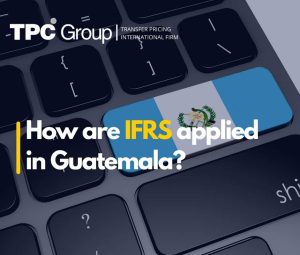On January 20, 2022, the new edition of the Transfer Pricing Guidelines for Multinational Enterprises and Tax Administrations was published. This version consolidates the results of the reports issued by the G20/OECD BEPS Project.
Likewise, the guidelines have been modified to make them more consistent. It should be pointed out that the guidelines focused on Transfer Pricing refer to the correct application of the “Arm’s Length” principle, which consists of the application of the international consensus regarding the valuation of goods and services.
1. Background
The role of multinational companies has increasingly become more prominent in modern society, largely due to the globalization movement boosted by the connectivity and proximity the digital world brings us.
Companies have grown exponentially worldwide due to the evolution of communication technologies. However, complex tax situations join the exponential growth due to the multiple tax rules that may exist in several countries where these corporate groups operate.
When these multinational groups must comply with the tax rules of the new countries they start to operate, compliance costs could increase or be considerably higher than those incurred by a company in the same industry but only operating in a single tax jurisdiction.
2. Arm’s Length Principle
The international standard established by the OECD members to determine transfer pricing in the tax context is the ” Arm’s Length Principle.” Article 9 of the “OECD Model Tax Convention” defines that the conditions agreed upon between two financially or commercially related companies that differ from those established between independent parties, which result in untaxed profits and would have been so, but for the characteristics of the agreement, must be considered as a profit obtained by the company and consequently must pay the respective taxes.
3. Tax administration problems
Tax auditing institutions around the world present both practical and policy problems. In terms of tax policy, each jurisdiction can legitimately collect the taxes generated from taxpayers’ profits generated within its own territory. On the other hand, in practical terms, the tax models of each country have been designed to inspect and collect the activity generated locally but not that generated outside its jurisdiction, making collection complicated.
In addition to the aforementioned problems, a third external disadvantage is generated, both for internal development and external exposure, since cases of double taxation appear when seeking an effective tax control, which may generate border barriers for the transfer of goods and services.
According to the above on tax matters, each jurisdiction applies a taxation model based either on the residence of the taxpayer, on the origin of the generated income, or, in some cases, both variables will be considered to calculate the tax burden.
In jurisdictions with taxes based on the taxpayer’s residence, all income generated by the resident, including that from foreign jurisdictions, will be considered for the tax calculation. On the other hand, those taxing legislations based on the origin of the income, only what is generated within the tax jurisdiction would be taxed.
4. Arm’s Length Principle Solutions
The application of the arm’s length principle, a general standard agreed upon by OECD member countries, mainly aims to ensure fairness in the calculation of tax bases and to avoid double taxation. These objectives contribute to reducing existing conflicts between tax jurisdictions and, in turn, encouraging investment and international trade.
In this global economy, the Arm’s Length principle aims to help OECD member countries expand their international trade boundaries by establishing a non-discriminatory baseline standard to achieve the highest levels of economic development for the member countries of this institution.
5. Article 9 of the “OECD Tax Model Convention”
The “Arm’s Length Principle” is stipulated in Article 9, paragraph 1 of the OECD Tax Model Tax Convention, which establishes the baseline for bilateral tax treaties that OECD member countries will use, whether between these or non-member countries. Article 9 states:
“[Where] conditions are established or imposed between the two [associated] companies in their commercial or financial relations which differ from those which would be made between independent companies, then any profits which, but for those conditions, would have accrued to one of the companies, but, because of those conditions, have not so accrued, may be included in the profits of that company and taxed respectively. (OECD; 2022) “1
In practical terms, the principle established by the OECD aims to align profits with conditions established between independent companies in comparable transactions and comparable circumstances (i.e., in “comparable uncontrolled transactions”).
The Arm’s Length Principle aims to develop the approach of treating the members of a multinational group as separate entities and not as equal parts or extensions of a single unified business.
It is due to the separate entity approach treating the members of a multinational group as independent entities. Therefore, the focus is on the nature of the transactions these members perform and whether the terms thereof differ from those obtained in comparable unrelated transactions.
6. Burdens on taxpayers
There is a strong need to create a balanced approach of reliability and burdens for taxpayers and tax administrations. Currently, paragraph 1 of Article 9 of the OECD Tax Convention Model, the base for comparability analyses, introduces the following needs2: (OECD; 2022)
- A comparison between the conditions, facts, or taxes between associated enterprises and those that would be performed between independent companies to determine whether a restatement of accounts for calculating the tax liabilities of associated companies is authorized by Article 9 of the OECD Tax Convention Model.
- A determination of the profits that would have been earned under the arm’s length conditions to determine the amount of any restatement of accounts.
Nevertheless, many countries find the arm’s length principle necessary. One of the most important is that the standard provides broad parity of tax treatment for members of multinational groups and independent enterprises. Likewise, the application thereof places associated and independent companies in a more equitable position for the taxes they are subject to and avoids the creation of distorting tax advantages or disadvantages for the relative competitive positions of any entity. Consequently, the Arm’s Length Principle promotes the growth of international trade and investment.
7. The Arm’s Length Principle and “Commodities”
Another feasible fact is the effectiveness in the vast majority of cases that the arm’s length principle is correctly applied. For example, there are many cases related to the purchase and sale of commodities and money lending. In such cases, the price of the transaction can easily be found in a comparable transaction carried out by comparable independent companies in comparable circumstances.
Likewise, many cases allow for a relevant comparison of transactions. In this case, the level of financial indicators such as margin over costs, gross margin, or net profit indicators is considered.
However, there are significant cases in which the arm’s length principle is complicated to apply, such as multinational groups engaged in the integrated production of highly specialized products in goods, special intangible assets, and/or the rendering of specialized services. There are specific solutions for this kind of practice, such as the employment of the transactional profit splitting method.
8. Difficulties for the Arm’s Length application
One of the practical difficulties is that associated companies can perform transactions that independent companies would not. These transactions may not necessarily be motivated by tax avoidance but by the different commercial circumstances than those of independent companies if performing transactions between members of a multinational group.
In this regard, when independent companies rarely perform transactions like those performed by associated companies, the arm’s length principle is difficult to apply by the absence or little direct evidence of the conditions that independent companies would have established. Therefore, the mere absence of transactions between independent parties does not exempt from being at arm’s length conditions.
In certain cases, the Arm’s Length Principle may generate an administrative burden for both the taxpayer and the tax administration. For example, in the case of the tax administration, it may be included in the verification process, perhaps some years after the transactions have taken place.
In this audit, the tax administration would examine any supporting documentation drafted to evidence the consistency of its transactions with the arm’s length principle and may also need to gather information on comparable uncontrolled transactions, the market conditions at the time the transactions are being conducted, or any situation for numerous and varied transactions. Such requirements, or evidentiary means, make the timely compliance by companies over time.
9. Conclusions
Based on the above, we can conclude both tax administrations and taxpayers usually have difficulties obtaining adequate information to apply the Arm’s Length Principle. It is because the Arm’s Length Principle normally requires taxpayers and tax administrations to assess the uncontrolled transactions and business activities of companies and compare them with the transactions and activities of associated companies, which can obviously require a substantial amount of data.
In addition, the information obtained may be incomplete or difficult to interpret. On the other hand, if other information exists, it may be difficult to obtain due to its geographic location or that of the parties from which it may have to be acquired. Furthermore, information may not be obtainable from independent companies due to confidentiality issues.
In other cases, the information on an independent company that could be relevant may simply not exist, or there may be no comparable independent companies. In summary, it is important not to neglect the objective of finding a reasonable estimate to apply the Arm’s Length Principle, resulting in reliable information and an orderly and optimal audit.




